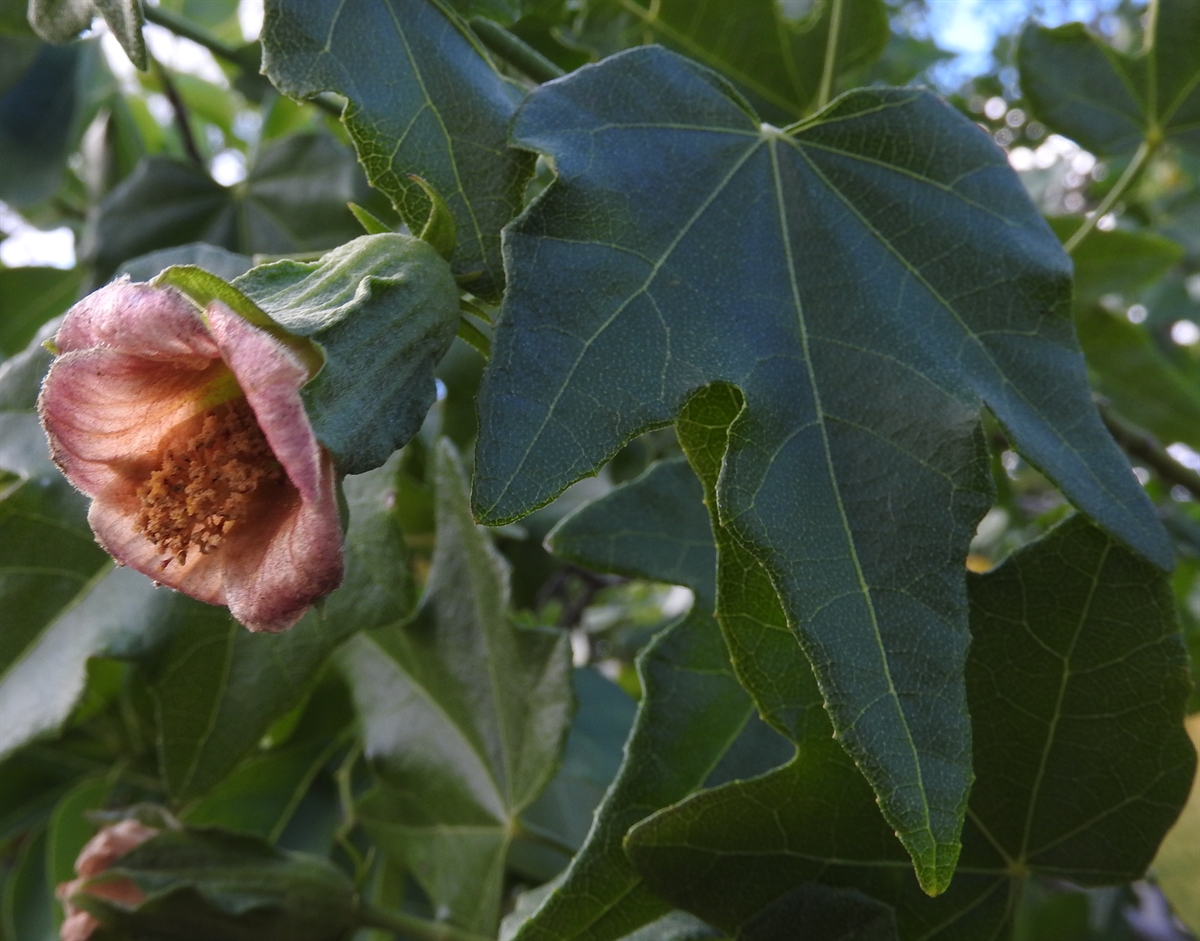Habit: Hibiscus clypeatus grows as a large shrub to small tree to 5 m. in height. The leaves are arranged alternately, to 15 cm long, palmately 3-5 lobed to ovate/triangular, acute leaf apex, dentate leaf margin and cordate base. The young stems and leaves are stellate pubescent.
The complete, perfect, actinomorphic flowers are solitary in leaf axils. The calyx has 5 green, fused sepals forming a shallow cup. The corolla has 5 brown/orange, fused petals. There are numerous stamens that are fused forming a tube around the style. The ovary is superior with 5 locules and numerous ovules. The fruit is a woody capsule that is brown at maturity breaking apart rather than splitting along suture lines. All parts of the flower including fruit are pubescent.
Habitat: Hibiscus clypeatus grows in Dry Broadleaf Evergreen Formation – Shrubland (coppice, scrubland).
Distribution: Hibiscus clypeatus grows throughout the Lucayan Archipelago, Cuba, and Hispaniola.
Medicinal/Cultural/Economic usage: Hibiscus clypeatus is not known to be used medicinally in the Lucayan Archipelago.

